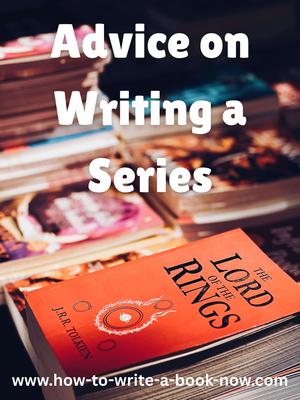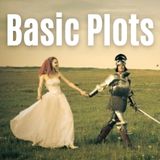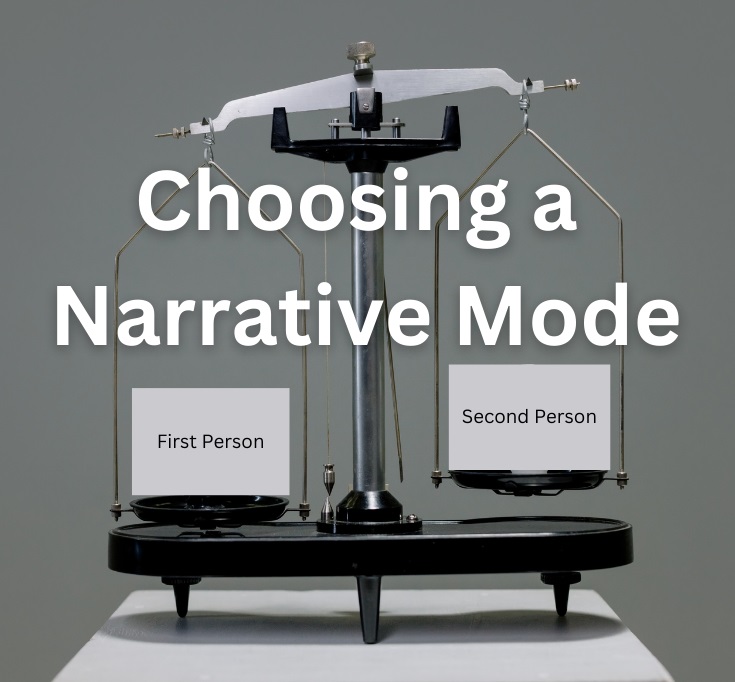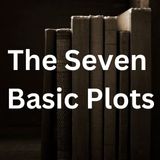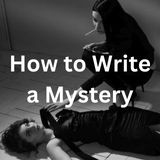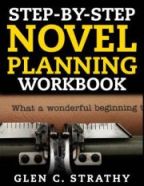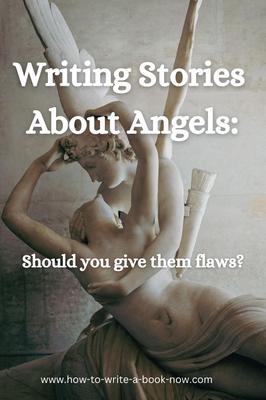How can I turn this book into a series?
Question: I know exactly what I want, I just can't figure out how to it into a book. When I get an idea it plays in my head like a movie so it's never hard for me to take the movie in my head and make it into a book. My problem is that the idea I have now I think of like a TV show. How can I turn this book into a series? When I picture this story everything is connected but I think in episodes not movies. Also with this I think about different bad guys like how in some TV shows there's a different big bad every season. So how can I organize this so that it works as a book series? I'm thinking maybe a 3 book thing would work like, each 3 books would have their own bad guy sort of like it being one season but it's still all the same series and connected. Or I could just write my first story (season) and it play out however many books it takes and just continue and bring in a new bad guy when the first bad guy is done. Do you have any advice or suggestions on the way I can organize or structure my story so that it works and makes sense? I know there are shows based on a series but I've never read one so I don't know how that works. I feel like I'm almost doing the opposite by taking a TV show idea and turning it into a book series which I have no idea how to do. I can picture it but I just don't know how to organize it. Any suggestions?
1. If your idea is more episodic, you might consider writing a series of short stories and trying to sell them to literary magazines. Lots of writers do this. Make sure you sell only the first publication rights and retain subsequent rights, so that eventually you can package the stories into an anthology that can be published as a standalone book. The nice thing about this approach is you get paid twice for the same stories. It also means you don't have to make as much of a commitment in the beginning until you see how well your characters are received.
2. If each episode seems to be more book length than short story length, then you can certainly consider writing a
3. A third approach is to make each book a standalone story, but at the same time have an overarching series plot that unfolds over the course of several books. Even though each book is a completely separate work, the series plot is like a subplot in the early books. The subplot gives the reader an additional reason to read the next book in the series (to see how this series plot develops).
4. A more developed variation is to make each book one act of the series. The plot of each book resolves itself, but in a way that sends the characters in a new direction in the next book. This is what you see in true trilogies, tetralogies, etc.
5. The most extreme form is the multi-volume book, in which nothing is resolved until the last book. This can be frustrating for the readers who pick up volume one (not knowing what they are getting into) and find themselves left hanging. Some readers disliked the first volume of The Lord of the Rings for this reason.
Each of these variations has advantages and disadvantages. Consider television series. Most series used to be completely episodic (options 1 & 2). The advantage was that new viewers could start watching at any point in the series and get an enjoyable story, so it was easier to grow an audience over time. In recent years, TV shows have tended to have long story arcs that unfold over the course of a season or even several seasons. This helps them retain viewers (who want to see how everything gets resolved). However, a viewer who tunes in half-way through the first season can feel so lost that they give up and switch channels (or perhaps wait and stream the entire series from the beginning).
It sounds like you are leaning towards one of the first two options. If so, you should probably focus on writing the first story, but keep track of your ideas for subsequent stories in case the first one sells.
The first book of a series
by Lisa
(New York)
Question: I find myself thinking of a great series yet the first book seems both the most fun and most complicated to write. The standard advice on most sites is that the first book of a series should be able to stand alone, as should most of the books. What is your advice on this? Also, what would be your insight on having an overall story goal which is developed and met in the series as a whole, and then a different story goal for each book in the series? I know a lot of authors seem to take this approach, but still there seems to be that stand alone book 1 standard. Just curious about your thoughts, and I have not been able to find a section on the website about series, if you even have one (which I believe you definitely should if you don't).
Answer: Individual books in a series must stand on their own, if for no other reason than the fact that your reader, who might only ever buy one book in the series, will be very frustrated to find out that the story isn't resolved. Some readers were very annoyed when Tolkein's The Fellowship of the Ring left them hanging, not realizing it was the first book of a trilogy.
At the same time, I'm very much in favour of having an overarching story that covers the entire series in addition to each book in the series standing on its own. That way, you can give your reader a satisfying and complete story in book one (so he doesn't feel cheated), and also create the sense that this is only the beginning of a much bigger story, and so make your reader hungry for the second book.
One thing that is great about Dramatica is that the theory is recursive. Events are part of sequences, which are part of acts, which are part of novels, which are part of series, etc. So you can structure each element to fit into the bigger picture.
As you suggest, you can have a story goal for the entire series (which will probably also be the goal for the last book when the series is wrapped up). Each novel becomes a part of the big plot.
At the same time, all but the last novel has its own story goal and is a fully developed story in addition to being part of the big story.
Incidentally, I suspect that the reason the first book in many series seems more standalone than the rest is because the author didn't have a series in mind when he/she wrote it. The story had to feel complete because there might never be a second book. Later, when the publisher asked for a sequel, the author started thinking in terms of a series and wrote the remaining books with that aim in mind.
Comments for The first book of a series
|
||
|
||
|
||
Trilogy vs longer series
by Freddi
(CA-USA)
Question: I've written my first novel, it's been edited and I am in the second re-write prior to publishing. My editor advises that it is too long (600 pages in the double spaced, one side of the page manuscript). I had planned on a trilogy, but another editor suggested I consider writing a series (with the idea I believe of dividing up my lengthy tome into more than one book- maybe two and then continuing. I'm told that as a novel it should not exceed 400 pages. Can you offer some thoughts on length please? Could my 600 page book work effectively as the first book in either a trilogy or a series? It seems like series books are much shorter. Thank you.
Answer: First, congratulations on getting to this point.
Second, if you are using standard manuscript format, 600 pages is roughly 150,000 words, which is certainly epic-length. Most novels are between 70,000 and 100,000 words.
I can't tell you what to do, because a lot depends on your writing style and how your story is structured. If this is your first book, you want to give your readers a complete story, even if you foreshadow a sequel (which has the advantage of encouraging readers to buy the next book).
Some ways you might do this...
1. Cut 50,000 words. This may sound cruel, but many manuscripts can benefit from such tightening. Obviously, you don't want to create plot holes, but you might consider if there are places where you can condense a sequence of three or four scenes into one scene without omitting any of the essential plot points. Can the development of a relationship arc happen within plot scenes rather than in their own separate scenes? You might also consider if there are subplots that aren't essential to the story.
2. If you're going to divide the work, make sure you divide at an act break -- a place where one sequence has been completed but the stage is set for what will happen next. The most common places to divide are the end of act one or act three, but act two is also an option. The end of act two is generally the place where things have gotten complicated, relationships have deepened, and the hero crosses the point of no return. (It's a good spot for a cliffhanger.)
Of course, you have to see if your book's act breaks let you divide it easily into two novel-length sections. In some stories, the last two acts are considerably shorter than the first two.
3. Writing a longer series is the third option. It's easy enough for a trilogy to become a tetralogy (just split the middle act into two). This may mean developing what you have into 210,000 words or more.
Notice I say "developing" not lengthening. In this case, you would be looking for single events that might be developed into a structured sequence of 3-4 several events--the opposite of tightening. Every event should be an important stepping stone in the larger sequence, which is in turn an important part of a bigger event, etc. Never just "pad."
Done well, this third option would result in one act per book. Each act would be part of the overall story as well as complete in itself.
Best of luck.
Series in a Family Saga
by Betty K
(Canada)
Question: I just read your reply to the question of writing a series where you state:
"The hard part about writing a series is that your main character cannot have his deepest problem resolved until the last book. Yet, he must have a problem to resolve in each book of the series, in order to make each book a satisfying read, complete unto itself."
In my series, the protagonist changes in each of the sequels although most of the characters reappear. Each book has its own problems which are resolved by the end of that particular book.
Are you saying that this would be wrong?
Answer: No, not at all. In fact, I don't like to say anything is wrong. (I probably should not have used the word "must.") I was thinking about a particular type of series.
What I would say is that series that revolve around a main character and have a Series Goal and an overarching plot that weaves throughout all the books give the readers a strong incentive to keep buying each new book as it comes out. Readers can get very attached to the main character and want to see how he/she eventually resolves the problem that has plagued him/her throughout the series.
However, that's not the only thing that can make a series work.
I also mentioned that some series revolve around a main character, but have no Series Goal. In that case, readers come back because they like the character or the type of situations he deals with. Another example of this episodic format would be the James Bond books - all separate stories, some even with different main characters - but one character links them all.
Of course the challenge with this type of series, where there is no Series Goal, is that the main character cannot change much. If he were to resolve his inner conflict, he would then lose the thing that drives him, making him useless for the next book. So most often, just like the main character of most television series, these characters remain much the same from story to story.
Another possibility, such as you describe, is a series in which (if successful) the reader falls in love with the world of the story - which includes the cast of characters - and possibly the type of problems they wrestle with. You have a number of stories linked by the fact that they share a setting and cast members. You may also have themes that repeat in different forms among the various stories as an additional way to link them all.
This technique is often employed in literary fiction and, I suspect, appeals more to holistic thinkers than linear thinkers, since the series lets the reader see some of the same events from many different perspectives.
I would argue however that, of these three ways of linking books in a series, that having a Series Goal and overreaching plot as well as one main character is the strongest way to encourage your readers to read the whole series.
A story feels done when all the conflicts and problems have been resolved. That's usually where the book ends. However, if you have a Series Goal and plot, the story doesn't feel completely finished until the end of the last book. So the readers keep with the series because they want to learn the final resolution (one hopes).
Incidentally, there's no reason why, if you were so inclined, you couldn't incorporate a Series Goal and overreaching plotline into the series you're writing, even if each book has a separate main character. Sometimes this is done by having a narrator for the series who is a character with his/her own agenda or inner conflict. Sometimes it's done by having a minor character who exerts an influence throughout the series.
In that case, it's as if, at start of each book, the main character of the previous book hands his particular role in the Series plot on to the next main character.
Just a thought.
Comments for Series in a Family Saga
|
||
|
||
Timeline Appropriate for a Mainstream Series.
by Terrell
(Columbia, MO)
Question: I have a planned Trilogy where the timeline is not like, for example, Harry Potter (each sequel is approximately a year later). Instead, the second book takes place about twelve years after the first and the third book book takes fifteen years after the second. My question is: Is my timeline appropriate for a mainstream series?
Also, my main character(and overall story protagonist) for all three books starts the first book as a just-barely adolescence (12-13 years old), a young adult in the second book (24-25 years), and a middle-aged man in the third book (39-40 years of age). My main questions are:
1. If the first book is a young adult novel, will the second two be adult novels? If so, would that confuse my audience due to the main character going through different inner conflicts in all three books?
2. Should I make all three books either an Adult or young novel, so the audience would not be confused?
Answer: First, there's absolutely no reason why you can't have gaps of years between book. An example of a similar series would be Ursula K. Le Guin's Earthsea series.
Second, I wouldn't worry too much about whether the second and third books should be YA or adult. Your challenge is getting the first one written and sold. That's a hard enough task to worry about for now, and you may find in the writing of the first book that your original idea changes somewhat.
However, since you ask...
If you are lucky, and you find the sales of the first book are strong enough that the publisher asks for a sequel, you will want to bring your existing readers along with you.
So I definitely would not write the first book as middle-grade fiction, even though a 12-year-old MC is typical of a middle grade book (because kids like to read about characters a little older than themselves).
Whether you write the series as adult or YA depends on the types of topics and issues you want to cover.
YA can cover darker themes than middle-grade (or treat the same themes more darkly) while still omitting the kind of mature content of a book for 20-somethings.
For instance, books like Huckleberry Finn and Ender's Game have children as MCs but are aimed at an older audience. Again, the Earthsea series is another example in that the MC, Ged, starts out as a boy but is an old man in the last book, yet the series would be classified as YA.
It's not that YA readers always have to read about characters their own age. They enjoy reading about adults too, as long as the themes and topics seem relevant to them. But there are certain issues and topics that adult readers are interested in but teens would not be into (middle-age crises, messy divorces of couple with no kids, growing elderly, etc.) and certain topics school boards might not buy for YA readers (graphic sexuality).
If you want to cover issues that teens wouldn't relate to or that the library market wouldn't buy for them, then write the series as adult fiction. There are adult books that have children as MCs (e.g. Riddley Walker).
Comments for Timeline Appropriate for a Mainstream Series.
|
||
|
||
|
||
|
||
|
||
|
||
|
||
|
||
|
||
|
||
How to Outline a series
Question: I currently envision the story I'm planning to write as a 5 books series and was wondering how to outline a series of this length. Each book has its own inciting event, complication, climax, and resolution, however the main character throughline, character relationships, etc are all part of the larger story and don't advance until later. So I guess my question is how would I outline the plot elements for the first book? If it helps it is a "hero's journey" story with a sci-fi setting.
Answer: Even if your main character's arc does not reach its climax until later in the series, you will likely find that it needs to have an arc in each book.
For instance, you say you have a climax and resolution in Book 1. Great. But that means the main character is going to have to make a choice at the climax about the right way to achieve the goal for that book. Maybe he doesn't change - maybe his choice is to stay steadfast, and that's the right choice to achieve that goal. But that's still a choice, and the reader needs to see him pressured to make the opposite choice. Otherwise, the protagonist has no inner conflict, which means the reader can see well ahead of time what choice he/she will make, which makes for a less exciting climax.
To make your climax interesting, you want your reader to have no idea what choice the main character will make - which means there must be some inner conflict.
So, the climax in the overall throughline in each book should be accompanied by a climax in the main character throughline, where the main character's inner conflict is resolved - so far as that book is concerned.
Of course, you may also have a main character arc that stretches over the entire series, just as you may have a series plot that does the same.
One way to structure the series is to think of each book as an act in the series story. So the main character's arc will be divided into stages - one per book. Each stage is an event or sub-arc in his/her journey, and each sub-arc can have its own beginning, complication, climax, and resolution.
The same is true for the other relationship arcs. Maybe they become more significant later in the series, but you want them to start somewhere. You want to tease the reader a little so he wants to find out what happens with these relationships in the next book. So you create an arc for each relationship that stretches across the series. Each arc passes through stages (events) and each stage is broken into smaller stages (events).
Hope that helps.
Comments for How to Outline a series
|
||
|
||
|
||
|
||
|
||
Turn a Series of Stories into a Standalone Novel
by Emilio
(WestHills)
Should I turn a series of stories into a standalone novel or Trilogy?
As I was reading through the articles and questions on this site to help with my own progress as a complete newbie, I stumbled across something that was a bit concerning to me and my writings.
I should start by saying that my first intention was an anime. So I wrote, a lot, and ended up with 25 or so scripts with an overarching plot that I decided to turn into a novelization instead. My goal was to make a Light Novel or an equivalent, but in doing so I realized that it would, almost certainly, be a Multi-Volume series. Out of the 25 scripts (which isn't even the full story.), I only used 3.5 for the for my first manuscript with a word count of +50,000.
So, how could I still tell my full story that was designed to be Multi-volume in a more "Harry Potter" fashion? A standalone with an overarching plot?
And yes, it is a fantasy!
Answer: I think you have a couple of choices. You either...
1. You condense your 25 episodes into a story that can span a trilogy or tetralogy, perhaps omitting material that isn't essential to the main story. Each book is a complete story in itself while also being an act or the overarching plot.
2. You write a series of standalone novels involving the same main character or characters. Perhaps some of your episodes can be expanded into novel-length stories or combined to make one novel. Your original overarching story may become the subject of one or more of these novels. For instance, it might be a trilogy but there would be other standalone novels in the series.
If you designed your episodes to have an overreaching arc, rather than be purely episodic, your job will be a little easier.
Here are some useful techniques if you want to condense the story...
1. Develop an outline that summarizes your intended story.
Make sure the outline includes the major turning points (drivers) and what's happening in each of the four acts -- so you get a sense of the dramatic shape of the story.
Just as important, include subplots (which will have their own arc), the arc of the main character's inner conflict, the impact character's arc, and the arc of their major relationship. These articles may help...
https://www.how-to-write-a-book-now.com/how-to-write-a-synopsis.html
https://www.how-to-write-a-book-now.com/w-plot.html
2. Turn sequences into scenes.
All events in a story follow a certain 4-part arc...
setup --> complication --> crisis --> resolution
This is true whether the event is a single scene, a sequence, a novel, or a series.
If you want to condense the story, look for sequences (changes told through a series of scenes) and see if you can replace them with single scenes that do the same job in less space.
For instance, if you wanted to show a marriage breakup, you could have a scene that shows the potential for problems (a domestic squabble), another scene that shows the problems manifesting (maybe someone begins an affair), a third scene where a decisive event occurs (perhaps the affair is discovered), and a fourth scene that shows how things stand in the end (divorce).
Or you could just have one scene, that does it all. For instance, you could have a meeting between someone and their lover. Begin with the person talking about their marital troubles, followed by steamy sex, in the middle of which the person's spouse arrives, who then presents the person with divorce papers.
One scene thus shows the complete arc -- the change in the relationship -- but in less space. This technique is often more effective than just cutting, because it doesn't leave plot holes.
Do this for as many sequences as you need in order to reduce the size of the story without compromising the dramatic tension.
3. Cut unnecessary scenes/arcs.
Maybe you have some subplots that you don't need to tell the big story. Maybe you have episodes involving minor characters that can be left out. This material isn't wasted, because it helped you get to know your characters, but the reader of the standalone doesn't need to know it.
Regarding the first option (trilogy/tetralogy)...
Publishers do like trilogies because it helps them sell more books.
It is important that the first book be a satisfying and complete story, so that readers don't feel you've left them hanging. But at the same time, you could make the first book the start of a bigger story (like Harry Potter).
Think about how Rowling makes the first Harry Potter book the complete story of Voldemort's attempt to obtain the Philosopher's stone. That story is complete. It ends in failure for Voldemort. Yet she also raises questions that are unsolved -- including the possibility that Voldemort will return and that there will be an ultimate showdown between him and Harry. She hints at a lot of backstory that can be expanded in later books and foreshadows events that will come later.
In other words, the first book can be the first act of a bigger story, the resolution of which sets the stage for the next act.
Best of luck.
First Book can Stand Alone
by Mel
Question: I want to write a series but I'm doubtful if my first book can stand alone. It has its own plot but there are events on it that will pursue and need to justify in the next books unlike what has been said that first book should be stand alone. Isn't tough to get this kind of book published nowadays?
Answer: Not necessarily. What publishers want changes all the time and its very difficult to predict what their preferences will be two years from now.
However, to be fair to your reader, the first book should have a story problem that is resolved by the end, so that the book tells a complete and satisfying story even if there never is a sequel. However, the resolution of that goal could set the stage for a potential next book in the series, perhaps by opening up some larger issues or giving the characters a new purpose which they will pursue in the next book.
It's a bit like writing a pilot for a television series. You want to introduce some continuing characters, the story world, and perhaps some overall series problem or mystery that will make the reader want to come back for more. But at the same time you don't want the viewer to feel the story is incomplete. The first episode ought to be a satisfying experience, which requires some kind of resolution. Pilots that tell a complete story can become made-for-TV movies or specials even if they never lead to a series.
This was the problem some people had with The Lord of the Rings. They read the first book, not realizing it was the start of a trilogy, and felt annoyed that the story was left dangling.
At the other end of the scale, there are many series in which each novel is completely separate. The only thing they have in common is the main character and perhaps the type of plot (for example, Agatha Christie's Poirot or Ian Fleming's James Bond novels).
Established writers with a history of strong sales may get offered a contract to write a series. In such cases, they can get away with writing the type of trilogy where only the last book has a resolution, so the reader has to buy all three books to get a complete story.
I personally feel such cases are unfair to the reader who isn't already a fan of the author and buys the first book just to check him/her out, only to find out he has to buy two more books. It may have some benefit in terms of marketing, but at the cost of some integrity. It may also make some readers decline to buy that first book, because it requires a bigger commitment than they want to make with an author they haven't read before.
Difference Between a Standalone Book and a Series?
by Linda
(Canada)
Question: Can you explain the difference between a standalone book and a series? I'm working on what I would call a series of what I guess would be mainly sweet romances (some in which the protagonist finds love and others in which the happy ending is their growth in self-awareness or character). Although each title can stand alone, there are three main characters who play a major role in every title, but not necessarily any of them as protagonist.
Instead, in every title, either the protagonist or the love interest is from one of four families... and the reader could sometimes get to almost the end of the book before realizing, "Oh, that's So-and-So's brother. Go figure." Also, a specific character may be protagonist in two to four titles before finally living happily ever after with the lover of his/her dreams.
Is this a still considered a family saga series? Would I shop it around as such, or market the series to publishers with a gussied up version of what I just wrote in the preceding paragraph?
I just discovered your site quite recently, and am going to recommend it to anyone and everyone as the most helpful I've come across.Thanks so much for being such a great gift to all who happen upon it.
Many thanks.
Answer: The primary reason books are identified as being a "series" is to sell more books. If someone likes one book, they may then purchase others in the series - provided they are identified as such.
There are many ways in which books can be linked in a series. The tightest, of course, is the trilogy (or tetrology, or quintology, etc.) in which there is an overarching plot and each book tells part of that plot, so that readers must buy every book to get the whole story.
In some series, each book is a separate story, but may have the same protagonist or other characters, and be part of the same genre, so that readers will look to buy the next "Miss Marple" or "Star Trek: Voyager" book, for example.
Some series use different protagonists but are set in the same story world and may share some minor characters. (Yours may fall into this category.)
And some series may have nothing in common except the style and genre (e.g. the children's series Goosebumps).
In fact, sometimes publishers create series in which all the books are written by different authors!
All that matters is that all the books in the series appeal to the same group of readers.
However, you probably should not try to sell the entire series in one go. It's a big commitment for a publisher to offer a contract for more than one book at a time, and they probably won't do it unless your last book was a bestseller. The key is to sell one book first. Do a good sales job on that book.
If a publisher really likes the first book and is considering buying it, then it's a bonus if you also have some ideas for sequels. If they hate the first book, it doesn't really matter how many others you have up your sleeve.
If the first book sells really well, then the publisher may ask for sequels because you will be a known quantity.
Comments for Difference Between a Standalone Book and a Series?
|
||
|
||
Series Fiction
Question: I have this idea for a novel series. I don't know; do people usually decide how many books are going to be in a series before or after they get into it? I have decided 8. And I pretty much know the result and/or problem for each book, but how do I keep my readers interested enough to keep reading, and waiting for the next book?
I also have no idea how the main characters are going to do anything, I just have little episodes played out in my mind. Like it would be cool if they got captured by pirates or they had to rely on the mercy of a crazy wizard. Or maybe all the heirs of The Seven have this huge magic duel because they don't believe that the main character is who she says she is. I have eight books to fill and there was seven because of The Seven but then I decided what was going to happen at the end of the seventh and realized I'd need another book. I'm only 15, but i have wanted to write this novel since I was 10. (Trust me it's come a long way from being a ten-year-old fantasy) So anyway, my question is: what do I do with these episodes I imagine, and how do I fill in the holes?
Answer: A lot of writers, particularly in the fantasy genre, think in terms of series from the beginning. This is probably because they are also fantasy readers, and fantasy readers who like an imaginary world tend to like spending a lot of time with it.
So, one technique is to make your imaginary world interesting and vivid enough for the reader to want to come back.
Even better, consider creating some mysteries that are introduced in the first book but not uncovered until later books, or an overarching plot that won't get resolved until later. That gives the reader another reason to read the whole series.
I know I refer to Harry Potter a lot, but it's a good example. Rowling planned all seven books in advance, and left plenty of unanswered questions in book one to keep readers coming back.
For instance, she doesn't really explain why Voldemort wanted to kill Harry until book five, even though his attack on Harry is the event that begins book one. Nor do we learn whether Snape is really evil until book seven.
Now, you say you have a number of events or episodes in mind for your series. So why not start by treating the entire series as one big story? Decide who the characters are that fit into this story - the protagonist, antagonist, etc. Use Dramatica theory to give this story its own Story Goal Requirements, Consequences, Forewarnings, and all the other elements, as outlined on the "How to Write a Novel" page. Choose an event that gets the story started. Have events that create bigger problems for the hero. Take the reader towards a climax.
Then see if you can make each major event in this overarching plot the subject of one book, and turn them into complete stories in themselves.
For instance, the Harry Potter series is the story of how Harry transforms from an underdog into a wizard confident enough in his power to avenge his parents' death. The event that gets this plot started is Harry's meeting with Voldemort and his discovery that they have a mysterious magical connection. That is the first book.
How does Harry come to meet Voldemort and discover their connection? By pursuing a different Story Goal that applies only to Book One: that of preventing the theft of the Philosopher's Stone. So the first event in the overarching series becomes into an entire novel in itself.
This is great structure, because each book in the series does two jobs: 1) it gives the reader a complete story with a satisfying ending and at the same time 2) it advances the overarching story.
The reader of book one can enjoy Harry's success at saving the stone, yet is also left knowing this is only the beginning. The reader wants to see what happens in the next book, and whether the questions will get answered. Will Voldemort come back? And why did he want to kill Harry in the first place?
As the series progresses, the stakes should get higher. The complications should increase. The truth should gradually emerge, until the hero has to make a great decision/action that will determine the outcome (which obviously won't happen until the very last book).
Hope that helps.
more than one book in a series
Question: I have a few ideas for how my books are going to lay out. I would like to see which is the least time consuming, but the best way to bring out everyone's back story.
1. Two books: one for the main character and the other for her ancestors.
2. Three books: book one- childhood to second almost death of main character. book two- ancestor brings her into the bridge between life and death and tells her the story of her ancestors. book three- starts with main character awakening her dormant power.
3. Five books: book one- main character. book two through five- ancestors' individual tales.
ALL of her ancestors are very important because the whole line leads down to her.
I feel that the third option would be too much. But what do you think? Or do you have a better idea?
Answer: Reality is hard on the creative spirit. And the reality is always all about sales and money.
The challenge every writer faces is how to make the first sale. If you sell one book, and it sells well, then the publisher might offer you a contract to do one or more books, depending on how well they estimate the sequels will sell. The sad truth is that it isn't always about the ideal number of books to tell the story, but the number of books that will sell profitably.
What you need to do is look at this fictional history you have sketched out and ask yourself what the strongest story is. Who is the most engaging character, the one your readers will fall in love with? Which story will resonate most with the readers?
That's the story you should write and market first.
If you find a publisher who agrees that it's a great story and offers you a contract, he or she may ask if you have ideas for a sequel (to which you say, "yes").
Once the first book's sales figures are in, and if they are good, the publisher may then offer you a contract for a sequel.
By that time, years may have gone by, and you will have matured as a writer. The ideas you have right now may have gone through considerable refinement and revision. You may have an idea for an even better sequel or sequels by then. You may have re-written the backstories and added new ones--or created stories that happen after the first book.
At that point, you will choose again what the strongest story is. But be warned: if readers really like the main character of the first book, they will want more of that character, and the publisher will want you to give it to them, because that will drive sales.
I'm not saying all those backstories won't be important, but often they become part of the fabric of the story world which may be alluded to but never published in their entirety.
To take an example, it is only because of the extraordinary success of The Lord of the Rings and The Hobbit that J.R.R. Tolkein's Silmarillion, Unfinished Tales, and other volumes of background material were published. Most fantasy writers have stories like these that never see the light of day.
Best of luck.
Theme in a series
by Amy
(England)
Question: I struggle with theme. Whether I'm over or under simplifying it I'm not sure but it feels (in my lack of experience) like a slightly narrow, one pronged way to tell a story. Certainly a series.
I'm massively oversimplifying this but in your experience can or should a series have an overarching theme, individual themes per book, or both? I feel like I'd have a hard time stretching one theme over several books but having back to back unrelated themes feels disjointed. Thanks for your help!
Answer: Just to make sure we're on the same page, when we talk of theme, we are referring to the values of the story. The thematic argument of a story is similar to a debate over which principles are truly valuable, desirable, or advantageous.
In a well-structured story, the thematic argument is anything but one-pronged, since a one-sided argument is so obviously biased it persuades no one.
Here's how Dramatica looks at the process of building a thematic argument...
First, every thematic issue needs its counterpoint. For instance, if you wanted to have a story about the value of altruism, the counterpoint might be self-interest.
So, throughout the story, you might have some events that show the value of altruism and some events that show the value of self-interest. The reader must then weigh up the evidence (which you can stack however you like) in order to reach the conclusion about which principle is more valuable.
To make this more complex, you want to have different perspectives on the issue. You might, for instance, have an event that shows what altruism is worth from the perspective of a privileged person, and another event that shows its value from the perspective of an unprivileged person. Ditto with self-interest. You might have another event that shows whose perspective is more trustworthy -- the privileges or the unprivileged person. And you might have an event that directly pits altruism versus self-interest and shows which is more valuable.
If that isn't complex enough, Dramatica proposes that each of the four major throughlines can have its own thematic argument.
The Overall throughline examines the values of the story world. For instance, does everyone in the community where the story takes place think that money equates with happiness? Or do they believe the love of money is the root of all evil?
The Main Character throughline explores the values held by the main character. What principles does he/she think are important or advantageous? Is there a counterpoint -- a contrasting principle that creates moral conflict?
The Impact Character throughline explores the values held by the impact character.
Finally, the Relationship throughline explores the values the main and impact characters both wrestle with. Often, these two share a perspective that sets them apart from the other characters. They may share a common issue and counterpoint that they argue over.
In fact, Dramatica says that the real theme of a work cannot be stated, but exists at the intersection of all four thematic arguments.
Of course, as much fun as it can be for a book club to try to pick apart the thematic argument and decide what "the real theme" of a book is, it can be a nightmare for a writer to try and build such a complex argument mechanically, especially if you are more of a "pantser."
However, it can be worthwhile to think about what sort of values your characters have and make some notes, even if you then let your instinct take over in the actual writing.
As for the matter of series vs. individual books...
You always have two tasks with a series. You have to make each book a satisfying read, and you need something that links the series together that makes it a series.
Theme can be a unifying element that unifies a series. For instance, racism vs. love is an issue that runs through all the Harry Potter books. It's an issue that permeates the story world, the overall throughline. That doesn't stop Harry from wrestling with different personal issues in each book.
Or you can have a series, like Agatha Christie's Poirot books, where the main character's core value is his condemnation of murder (and disorder in general), but each book is set in a slightly different social milieu where the issues are unique.
Hope that helps.
Comments for Theme in a series
|
||
|
||
|
||
|
||
Give each Sequel a Different Protagonist?
by Terrell
(Columbia, MO)
Question: Hypothetically speaking, if I planned a book series and it becomes a commercial success; is it a good idea to give each sequel a different protagonist? Or will it confuse the audience?
Answer: The problem is not that you will confuse your readers necessarily, but that you will disappoint them.
Generally, having the same main character helps tie a series together. There are many readers who, if they like the first book, will buy others in the series specifically to read more of that character's adventures. (This is why many series are named after their main character.)
Of course, it's not a hard and fast rule. It's not always the main character that defines the series. Some series are tied together by a common story world (e.g. the Fred Saberhagen's Berserker series, or Star Wars books). Some are held together by connections between characters (e.g. inter-generational series). You could even argue that when publishers put out a "line" of similar books by different authors (but in the same genre and aimed at the same readership) that is a paler version of a series. In all cases, the point is to get more sales for later books by attracting people who liked the earlier ones.
However, the more books in the series have in common, the more likely readers are to buy the later books. Having the same main character is a big factor, and you risk losing some sales if you deviate.
On the other hand, if the first book is really well received, some people will buy the second just because the author is the same.
You may also find, if you get to this stage, that your agent or editor may advise you based on their knowledge of your genre.
How's that for a wishy-washy answer?
- Home
- Plot Questions
- Give each Sequel a Different Protagonist?
